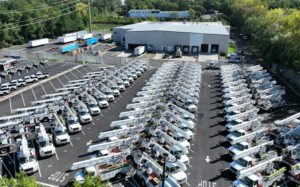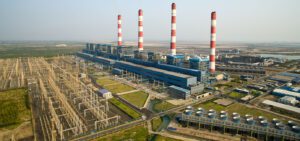
As infrastructure projects accelerate across industries, the role of fleet operations has never been more critical. Organizations depend on vehicles that can adapt to evolving jobsite, supply chain, and regulatory demands. Yet in a market defined by volatility and OEM shortages, rigid fleet specifications and single-source loyalty are no longer sustainable strategies. Instead, the fleets that thrive embrace adaptability as their true competitive advantage.
Resilience begins with flexibility, which can be applied across multiple dimensions of fleet management:
- OEM Alternatives: For decades, many fleets partnered with a single manufacturer, valuing consistency and brand loyalty. However, when supply chains tighten, this dependency can become a liability. By sourcing from multiple OEMs, whether Ford, GM, RAM, Toyota, or others, fleets create redundancy, minimize risk, and ensure continuity even during production disruptions.
- Vehicle Class Adjustments: Sometimes the best solution isn’t just another OEM, but another class of vehicle. Moving from an F-150 to an F-250, or even down to a compact pickup like a Maverick, can be the difference between sitting idle and getting crews and equipment to the field.
- Ordering Channels: Factory orders remain the most cost-efficient channel, but resilient fleets also explore dealer inventories or lightly used vehicles to bridge gaps. While less conventional, these channels offer shorter lead times—especially when carefully selected from late-model, low-mileage stock.
- Specification Flexibility: Rethinking what’s “non-negotiable” is key. Trims, drivetrain, bed length, or package preferences don’t always need to be rigid. Fleets can maintain uptime without sacrificing performance by focusing on functional fit rather than tradition.
The wrong vehicle doesn’t just inconvenience a driver—it can inflate maintenance costs and shorten lifecycle. Fleets that align specs with real jobsite conditions see tangible benefits. For example, one oil and gas fleet moved personnel transport from half-ton trucks to three-quarter-ton pickups. The upfront investment was higher, but drastically reduced failures caused by rugged terrain, ultimately lowering lifecycle costs.
Traditionally, total cost of ownership (TCO) focused narrowly on purchase price, fuel, and maintenance. Today, a more holistic view is required. Business continuity, project uptime, and reduced downtime must be factored in. A less expensive but unavailable vehicle may appear favorable on paper, but factoring in the costs of delayed projects or lost productivity tells a different story. Flexible sourcing is often the lower-cost strategy when measured across the full business impact.
Timing often dictates the right decision. Waiting months for a preferred model may make sense for a planned replacement cycle. However, when expansion demands immediate vehicles, choosing available alternative plans keeps projects moving forward. Fleets that anticipate these scenarios and build contingency plans into their sourcing strategies are the ones that achieve resilience.
As the industry shifts toward decarbonization, flexible spec’ing strategies also support long-term sustainability goals. By diversifying across OEMs and vehicle classes, fleet managers can begin integrating electric or hybrid models without compromising operational readiness. Adaptability secures continuity in today’s environment and paves the way for cleaner, future-ready fleets.
Today’s most resilient fleets aren’t defined by rigid uniformity, but by strategic adaptability. Fleet operators can align sourcing strategies with short-term operational needs and long-term infrastructure demands by leveraging multiple OEMs, adjusting vehicle classes, diversifying ordering channels, and rethinking specifications. The result is a fleet that supports decarbonization, lifecycle cost management, and project continuity while keeping organizations on the road to success.
—Tim Mundahl is Director of Fleet Consulting for Merchants Fleet.









